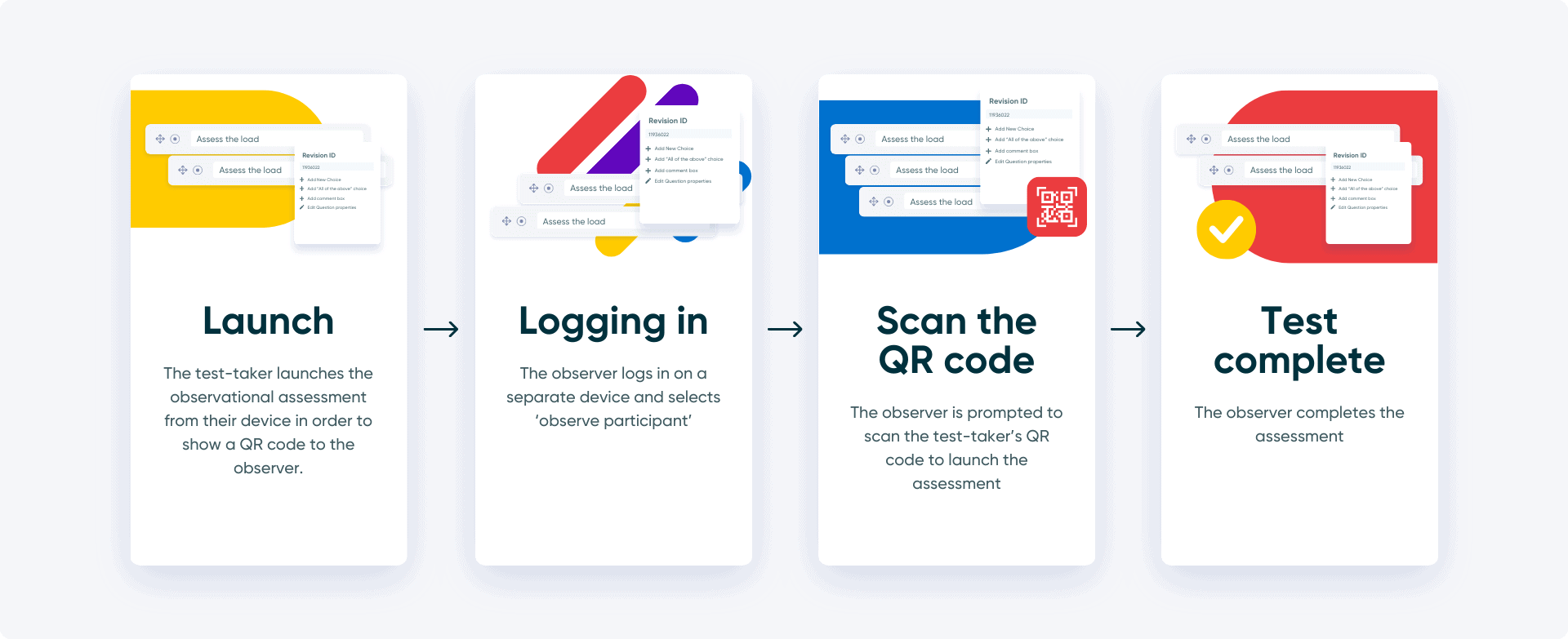In this article, we will look at what an observational assessment is, the advantages of observational assessments, the risk of potential biases and observational assessment tools.
Quick Links
What is an observational assessment?
An observational assessment is a test where an observer watches a participant perform a task and rates their performance, making it possible to evaluate skills or abilities that are difficult to measure using “traditional” assessments. Rather than relying on standard assessments, which often only test knowledge recall, observational assessments, similar to Performance-based testing, test and measure the test-taker’s abilities in an authentic environment.
In doing so, the validity of the results automatically increases and provides you (and regulators) with a more accurate picture of how an employee might perform in the real world. This also allows for a more holistic assessment experience, where a test taker’s skills, knowledge, and attitude can all be tested together through a range of formats.
How do observational assessments work?

Observational assessment examples
Observational assessments can be used for a wide range of exams and are most applicable and useful for high-stakes, on-the-job skills analysis. Some examples of how an observational assessment might be useful include:
- Assessing the competence and knowledge of a pharmaceutical sales representative
- Assessing the competence of workers on a construction site
- Assessing the SEP skills of cabin crew
- Assessing how well customer service representatives handle queries
- And much more!
What are the benefits of observational assessments?
“Observational Assessments are valid because they allow learners to demonstrate their skills in an authentic situation by performing tasks in the presence of an expert observer. The method is convenient as it can be integrated into both the observer and the learner’s day-to-day activities and is robust to cheating. Use of a common checklist generally ensures good reliability too.”
Steve Lay, SVP Product Management, Questionmark
- Prove employee competency and ensure you’re meeting health and safety regulations for high-risk environments
- Allows employees to demonstrate skills and knowledge across different environments including vehicle handling, customer service, utilities, construction sites, and much, much more
- Tests beyond knowledge to confirm skills can be practically applied in a safe, secure, and accurate manner
Are there any challenges in observational assessments?
A key challenge to be aware of for this assessment type is bias. The primary type of bias in observational assessments is observer bias. Observer bias is a difference between a true value and the value someone has seen due to ‘observer variation’ (when the observer fails to measure accurately). Biases like these can lead to significant errors that affect test results and undermine processes.
These sorts of biases are common as multiple observers or assessors may judge a task differently. For example, in a diving competition, there are usually 5 judges and they all score based on their observations alongside a set of criteria. Some judges may score highly and round up while others may score lower and round down. One way to mitigate potential observer bias in this scenario is to ignore the highest and lowest scores.
Observational assessment tools
Examples of tools you may need to conduct an observational assessment include:
- Test equipment
- A rubric
- A scoring sheet
- Audiovisual footage
- A scoring system